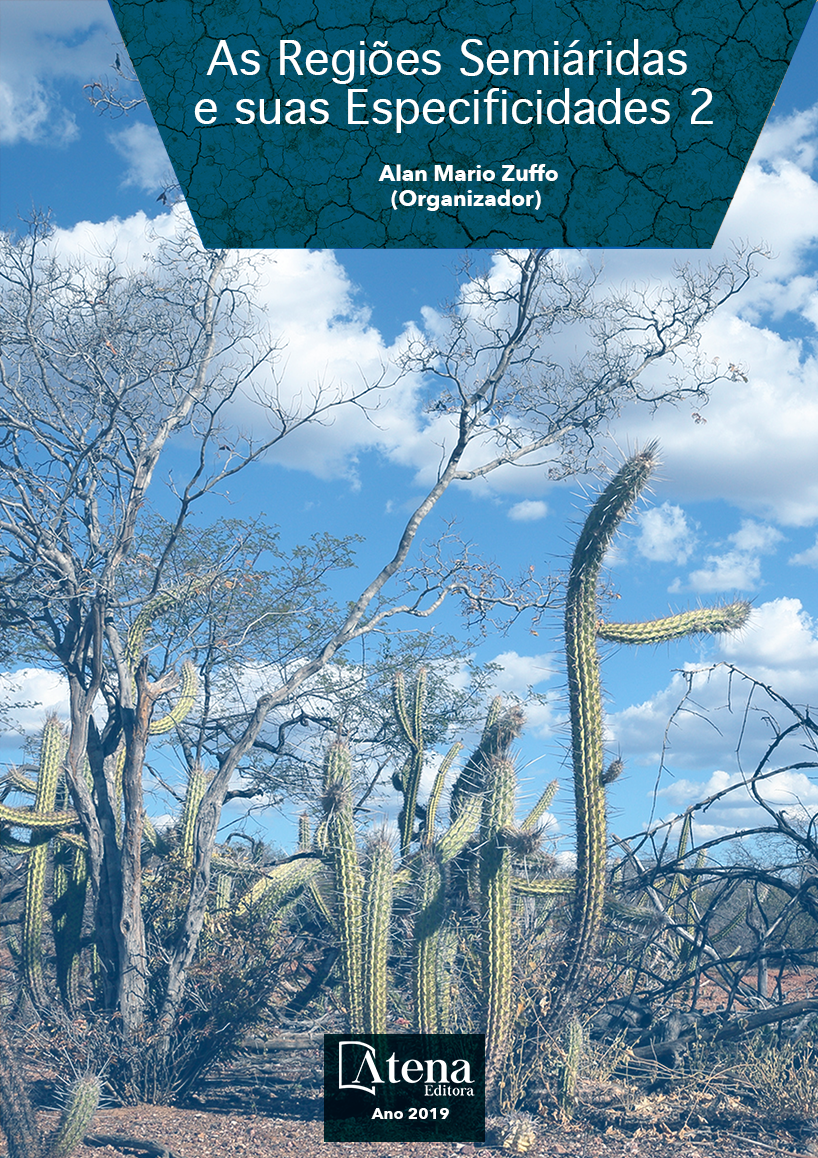
DESENVOLVIMENTO INICIAL DE SEIS ESPÉCIES DA CAATINGA PRODUZIDAS EM RECIPIENTES BIODEGRADÁVEIS
A Caatinga é um bioma da região
semiárida brasileira com baixa resiliência e em
processo de desertificação. Este cenário de
perturbação antropogênica e desertificação,
aliado às condições climáticas, torna a Caatinga
um ambiente prioritário para a restauração.
Para projetos de reflorestamento conseguirem
obter bons resultados de desenvolvimento
das mudas e de sobrevivência, as mudas que
serão levadas à campo devem apresentar boa
qualidade, seja em características morfológicas
como também fisiológicas. Baseado nessas
informações, o presente estudo tem como
objetivo avaliar o desenvolvimento inicial em
altura (H) e diâmetro na base (DNB) de seis
espécies nativas da caatinga produzidas em
recipientes biodegradáveis de bambu, como
também sua taxa de sobrevivência em uma
área degradada da caatinga. Foram utilizadas
seis espécies nativas, sendo três pioneiras (P)
e três não pioneiras (NP). O plantio foi realizado
em abril de 2017, com espaçamento de 3 x
2m, e utilizado hidrogel de fundação. Todos
os individuos foram plaqueados e mensurados
nas variáveis altura (H) e diâmetro na base
(DNB) uma vez por mês. Foi observado 100%
de sobrevivência para as pioneiras (P) e 75%
de sobrevivência para as não pioneiras, o
crescimento médio em diametro na base e
em altura apresetaram volores superiores
para o grupo das pioneiras. As espécies do
grupo sucessional das pioneiras apresentaram
maior taxa de crescimento tanto para a altura
(H) como para diâmetro na base (DNB).
Para mortalidade, até o momento, não houve
diferença significativa entre os dois grupos.
DESENVOLVIMENTO INICIAL DE SEIS ESPÉCIES DA CAATINGA PRODUZIDAS EM RECIPIENTES BIODEGRADÁVEIS
-
DOI: 10.22533/at.ed.9161915038
-
Palavras-chave: restauração florestal, bambu, áreas degradadas
-
Keywords: forest restoration, bamboo, degraded areas
-
Abstract:
The Caatinga is a biome of the
Brazilian semiarid region with low resilience
and in desertification process. This scenario of
anthropogenic disturbance and desertification,
combined with climatic conditions, makes the
Caatinga a priority environment for restoration.
For reforestation projects to achieve good seedling development and survival results,
the seedlings that will be taken to the field must have good quality, both in morphological
and physiological characteristics. Based on this information, the present study aims
to evaluate the initial development in height (H) and diameter at the base (DNB) of
six native caatinga species produced in biodegradable bamboo containers, as well
as their survival rate in a degraded area of caatinga. Six native species were used,
three pioneers (P) and three non - pioneers (NP). The planting was carried out in
April 2017, with spacing of 3 x 2m, and used hydrogel foundation. All individuals were
plated and measured in height (H) and base diameter (DNB) variables once a month.
It was observed 100% survival for the pioneers (P) and 75% survival for the nonpioneers (NP), the average growth in diameter at the base and in height showed higher
volverses for the group of the pioneers. The species of the successional group of the
pioneers had a higher growth rate for both height (H) and diameter at the base (DNB).
For mortality, to date, there was no significant difference between the two groups.
-
Número de páginas: 15
- Thalles Luiz Negreiros da Costa
- João Gilberto Meza Ucella Filho
- Anderson Aurélio de Azevêdo Carnaval
- Tatiane Kelly Barbosa de Azevêdo
- BRUNA RAFAELLA FERREIRA DA SILVA


